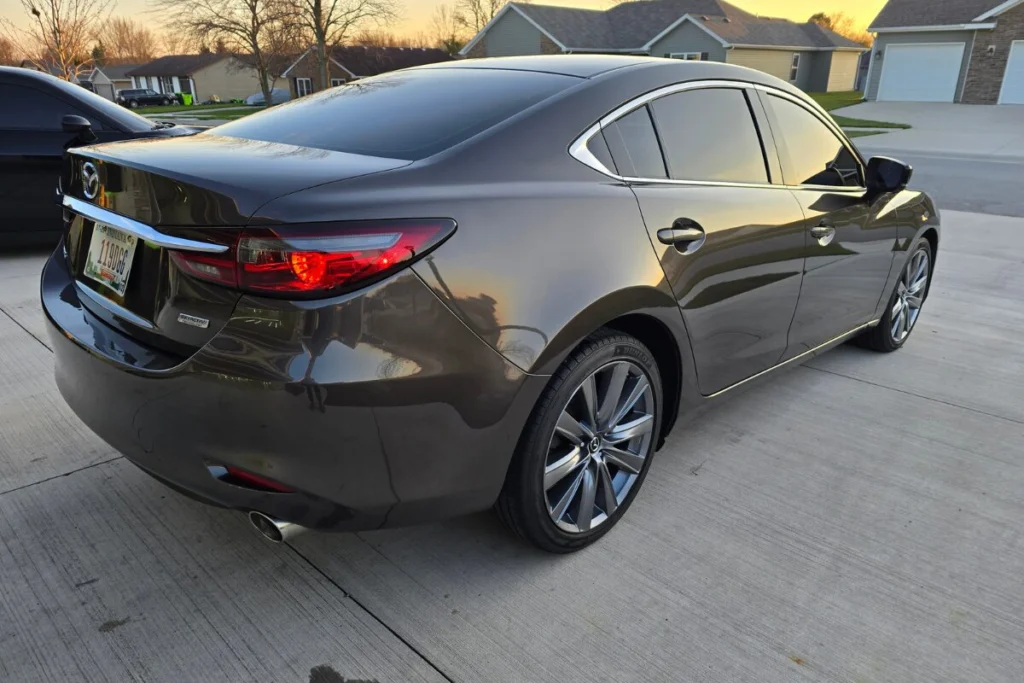Ceramic coating has become a popular choice for car owners looking to protect their vehicle’s paint while enhancing its shine. However, one of the most important aspects of ceramic coating is the curing process. Many car owners wonder how long it takes for the ceramic coating to fully cure and what factors influence the timeline. In this guide, we’ll break down the curing process, the factors that affect it, and tips to ensure the best results.
Understanding the curing process
Ceramic coating is a liquid polymer that bonds with the vehicle’s paint to create a protective layer. Once applied, the coating undergoes a curing process where it hardens and fully adheres to the surface. This process is crucial as it determines the durability and effectiveness of the coating.
Stages of curing
- Initial drying (24-48 hours)
The first stage of curing occurs within the first 24-48 hours. During this period, the coating will harden enough to withstand light exposure to moisture. However, it is still vulnerable to water spots, dust, and contaminants. - Partial curing (one to two weeks)
After the initial drying phase, the coating continues to harden and bond with the paint. During this stage, it is advised to avoid washing the car or exposing it to harsh weather conditions. - Full curing (two to four weeks)
The ceramic coating fully cures within two to four weeks, depending on environmental conditions and the type of coating used. At this point, the protective layer reaches its maximum strength, providing optimal resistance to chemicals, UV rays, and contaminants.
Factors that affect curing time

Several factors influence how long a ceramic coating takes to cure completely:
- Temperature and humidity: Warmer temperatures (70-80°F) and low humidity levels promote faster curing, while colder or more humid conditions can slow the process.
- Type of ceramic coating: Different brands and formulations have varying curing times. Some advanced coatings may cure faster than traditional ones.
- Application technique: Proper application, including correct layering and buffing, ensures even curing. Uneven or excessive application can lead to prolonged curing times.
- Airflow and ventilation: Good airflow speeds up curing by preventing moisture buildup. If applying the coating indoors, ensure proper ventilation.
- Exposure to water and contaminants: Early exposure to water, dirt, or chemicals can disrupt the curing process and affect the coating’s effectiveness. It’s best to keep the vehicle in a clean, dry environment during curing.
Tips to ensure proper curing
Ensuring that your ceramic coating cures properly is essential for achieving the best protection and durability. By following these key tips, you can maximize the coating’s performance and longevity.
Avoid washing the car for the first two weeks
Refrain from using soap, pressure washers, or automated car washes during this time. Even hand washing can introduce contaminants that affect the curing process.
Keep the vehicle indoors or under shelter
Protect the car from rain, bird droppings, and harsh weather conditions. If parking indoors is not an option, consider using a high-quality car cover.
Use a gentle, dry cloth for light dusting
If necessary, remove dust with a soft microfiber cloth to prevent contamination. Avoid using any quick detailers or sprays that could interfere with the curing process.
Monitor the surface for early signs of issues
If streaks, high spots, or uneven patches appear, it may be due to improper application or humidity affecting the curing process. In such cases, gently buffing the area with a microfiber towel within the first 24 hours may help correct minor issues.
Follow the manufacturer’s recommendations
Different ceramic coatings may have unique curing instructions—always adhere to them for optimal results. Some coatings require infrared curing or multiple layers, which can impact overall curing time.
Limit exposure to extreme temperatures
If the coating is applied in extremely hot or cold weather, curing times may be affected. Try to maintain moderate temperatures for optimal bonding.

How to test if the ceramic coating is fully cured
If you are unsure whether your ceramic coating has fully cured, you can perform a simple water test. Once the expected curing time has passed, spray a small amount of water onto the surface and observe its behavior:
- If the water beads up and rolls off effortlessly, your coating has cured properly and is functioning as expected.
- If water sits on the surface or spreads unevenly, the coating may need more time to cure.
Another indicator of full curing is the slickness of the surface. A properly cured ceramic coating will feel smooth and slippery to the touch. If the surface feels tacky or inconsistent, additional curing time may be needed.
For best results, consider professional ceramic coating application services that ensure the correct curing process and longevity of the coating. Whether you apply the coating yourself or seek expert help, patience during the curing period is key to achieving the best protective and aesthetic results.
Expert ceramic coating services in Roanoke, IN
For those looking for professional ceramic coating services in Roanoke, IN, at Inside Out Detailing LLC, we offer expert applications to ensure optimal results. Our team specializes in high-quality ceramic coating, providing superior protection and an enhanced finish for your vehicle
With a professional application, we make sure that the ceramic coating is evenly applied and cured under optimal conditions, maximizing its durability and protective benefits. Whether you’re looking for enhanced shine, long-lasting durability, or superior protection, our services are designed to meet your needs.
Give us a call at 260-519-8007 or visit 1210 Smith St, Roanoke, Indiana 46783 to schedule your appointment and experience the best in ceramic coating services.
